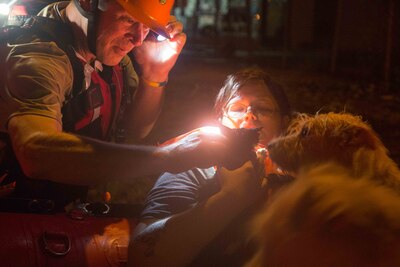
WASHINGTON —
The National Response Framework is operating as designed as the Carolinas face the aftermath of Hurricane Florence, the commander of U.S. Northern Command said in Raleigh, North Carolina, today.
Speaking to Pentagon reporters via video link, Air Force Gen. Terrence J. O’Shaughnessey said local, state and federal cooperation has been outstanding.
The general spoke from outside North Carolina’s operations center and said the effort allowed state and local officials to identify the capabilities needed as the storm approached, which allowed the Federal Emergency Management Agency and Northcom to integrate them into the broader federal response.
“Our Department of Defense anticipated that we would need things like search and rescue, we would need … the high-water vehicles, [and] helicopters and vertical lift to transport things back and forth,” he said. “That was exactly what we needed to have, and we had them pre-positioned and pre-postured, and the plan is now actively part of the response.”
Strong Cooperation
He said the cooperation and communication on the federal side has been incredibly strong, “as has the coordination and collaboration from the state ops centers and FEMA and us.”
About 13,000 service members are participating in the effort, with 8,000 being National Guardsmen. With Florence’s dissipation, the concern goes from the storm itself to the flooding. Streams and rivers throughout the region have broken their banks and flooded vast swaths of land. A drone video released early today shows what looks like a river, but actually is Interstate 40 – a major east-west highway.
“We are still concerned over the next 48 hours about the rising flood waters and how that can have a separate, but nonetheless equally important, impact to the local area,” O’Shaughnessey said.
Officials are watching flood gauges and assessing what will be needed if communities are isolated or people need to be rescued. “We are well-postured to augment the state force that has been actively engaged,” the general said. “I would say my overall assessment of the DoD response has been outstanding, and the key to that has been the coordination with the state – from the first responders to the state National Guard, and tying directly in with them.”
Both states activated their dual-status commanders, giving officials one point of contact for military help. “They both have forces under their command that allows them to synchronize their governors’ efforts with FEMA’s efforts and the Department of Defense,” he said.
(Follow Jim Garamone on Twitter: @GaramoneDoDNews)



